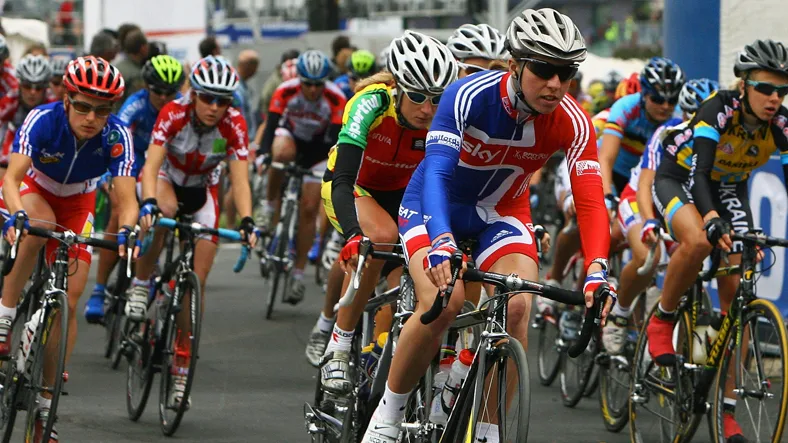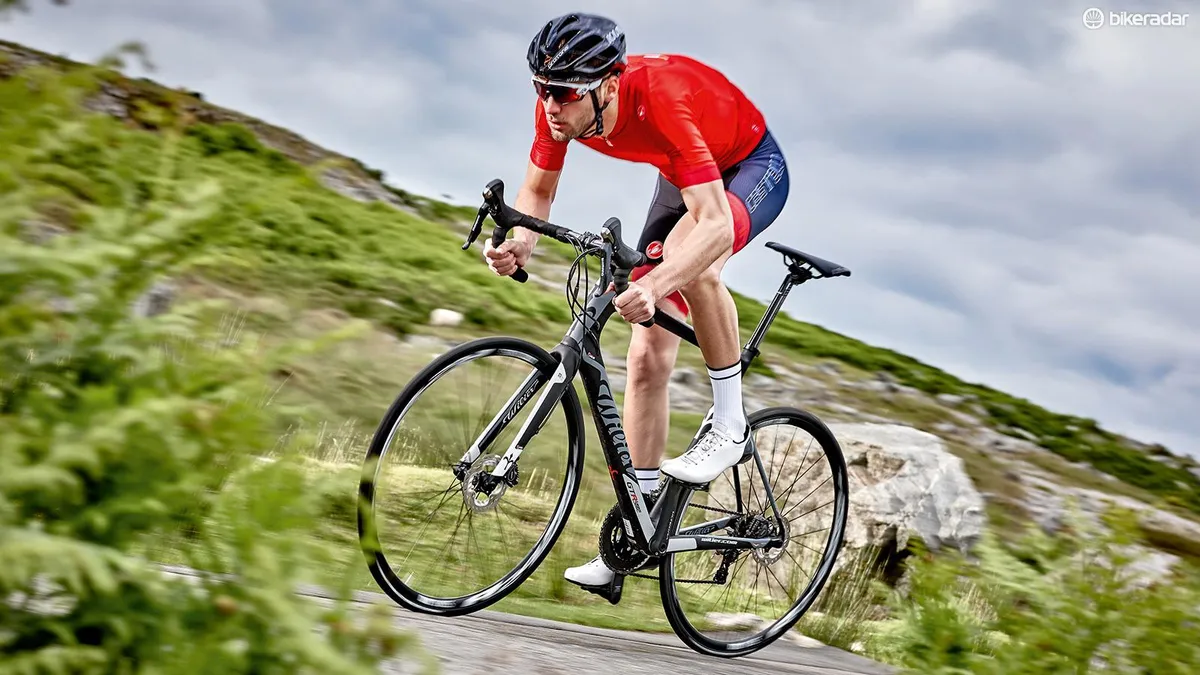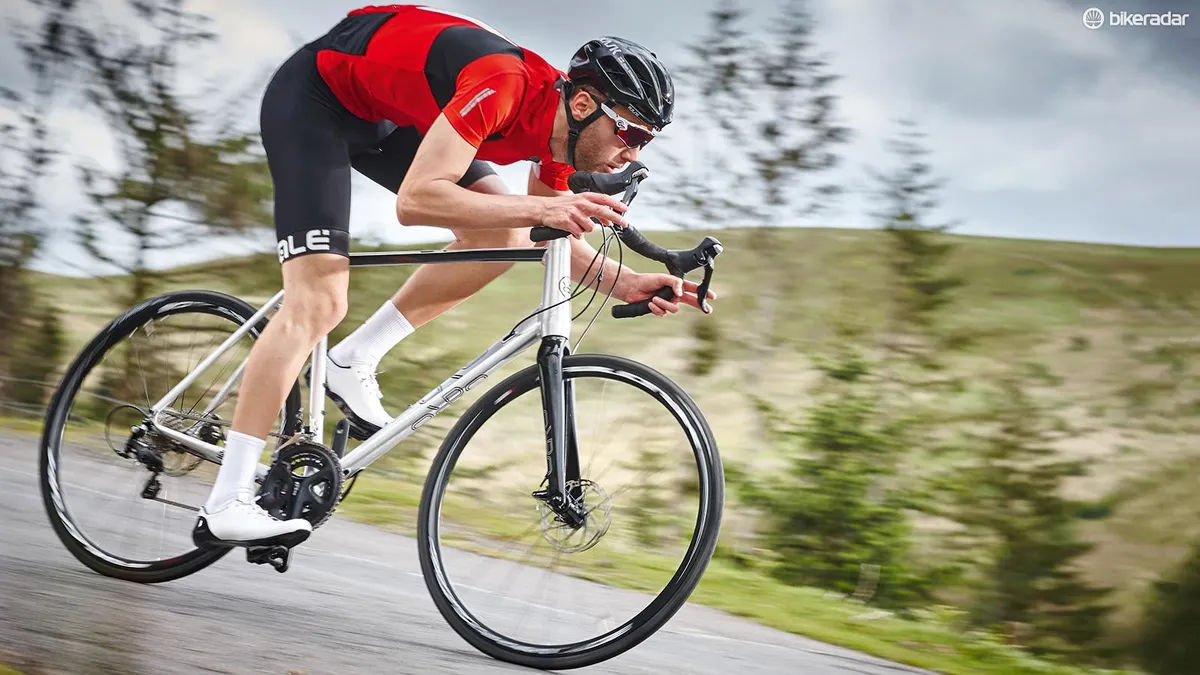How’s your training routine looking this week? If it’s the same as it was last week, last month or even last year, it’s probably high time for a revamp.
There are three main problems with doing the same old thing day in, day out. First, it’s dull, which means you’re less likely to get out there. Second, the very nature of training means that once your body has got used to a particular regime, you need to change it, in order to continue reaping new benefits. But most importantly, training should have a specific focus, a purpose behind it.
Set your target
Olympic gold medallist Nicole Cooke likens the process of devising your training regime to planning a trip from A to B. “A is your current level of fitness and B is where you want it to be by the end of the trip,” she says. Figuring out how you’ll get there — just like planning a journey before you get in the car — prevents you taking wrong turns or breaking down along the way, and gives you a sense of direction.
Count back from your deadline to the present and work out what you need to do to ensure you get there
Granted, says Cooke, just getting out on your bike will bring some benefits if you’re starting from a low level of fitness, “but if you want to ride faster, or more competitively, you will benefit from a well thought out structured schedule”. Step one, then, is to determine what it is you want to achieve.
“Set yourself a realistic target, but make sure it’s one that excites and challenges you, otherwise you’ll run out of steam before you get there,” advises British Cycling coach Andy Cook. If your goal relates to a specific race, you have an in-built deadline. If not, you need to give yourself a time frame in which to achieve it. Otherwise, you could still be talking about losing that half a stone, or breaking the hour for a 25-mile time-trial in five years’ time…
Once you’ve determined where you’re going, you need to work out where you are now. “It’s important to be honest with yourself about where you are, and how long you’ll need to reach your goals,” says Cooke. “If your skill and fitness level don’t match your aims, you are in for a frustrating and unsuccessful time.”
For example, if you’re weak on hills but are planning to do the next Etape, you’ll need to factor that in, both in terms of how you’ll structure your training and how much time you’ll need to build leg strength and climbing skill.

Design your route
Once you know where you’re going and what your starting point is, you can get down to the nitty-gritty of designing your route. “Count back from your deadline to the present and work out what you need to do to ensure you get there,” says Cooke.
Make sure you don’t plan your program in the absence of reality. You need to sit down with your diary so that you can build your training around work and family commitments — such as holidays and important deadlines — rather than creating a programme that you simply can’t stick to.
Andy Cook believes that a coach is invaluable in helping you formulate a programme. “A coach can be a useful sounding board, helping you ensure that your goals are SMART — specific, measurable, achievable, relevant and time-framed — and that your training is geared towards taking you closer to them,” he says. “Being accountable to someone also helps with motivation.”
Training principles
The training itself, in terms of how much, where, how hard and how far you ride, is specific to you as an individual and your goals. But whether you’re an elite athlete or a recreational rider, whether you want to win a Tour or complete your first century ride, the same training principles apply.
The biggest mistake most athletes make is to make the easy days too hard
Remember what we said earlier about if you don’t continue to add challenges to your training as you progress, you’ll stop getting fitter? That’s because of a training principle called ‘progressive overload’. Training (the overload) breaks the body down — just a little bit –—and if you get the level of challenge just right, it will build itself back up stronger and fitter.
If there’s not enough overload, you won’t trigger these adaptations — if you overdo it, you risk getting injured or ill and having to take off so much time that the potential benefits you would have reaped are lost. That’s where the word ‘progressive’ comes in.
It’s worth bearing in mind that the adaptation to overload takes place when you’re resting, not when you’re training. “Recovery is a vital part of training,” says Nicole Cooke, who takes two recovery days per week — one on and one off the bike. “It’s during recovery that the transformation brought about by training occurs, skip it and you risk losing out on those improvements.”
To ensure there is sufficient rest and recovery, Andy Cook suggests two strategies. First, following hard training sessions with recovery rides, or no training at all. Second, organising training into four-week blocks, markedly reducing the volume and intensity of training during the fourth week of each block to give your body a break. “You can’t ride hard all the time,” he states.
Joe Friel, coach and author of The Cyclists’s Training Bible, agrees. “The biggest mistake most athletes make is to make the easy days too hard, so when the time comes for hard training, they can’t go hard enough,” he says.

Periodisation
The most commonly used method of organising training into specific phases is called ‘periodisation’. In its purest form, periodisation involves breaking the entire training period — the macro cycle — down into blocks, each of which has a specific focus that builds on the last, with the ultimate aim of getting the rider to reach their peak at the appropriate time.
Take the opportunity to improve your technique and handling skills on the bike, too
The macro cycle is split into meso cycles, periods of four to six weeks, which are further divided into week-long micro cycles. But you don’t need your life to revolve around the cycling calendar in order to benefit from a periodised structure.
“It can sound complicated, but in essence all periodisation means is focusing on different aspects of training and performance at different times in a logical order, rather than training just any old how,” explains Cook. This should include riding technique and handling skills, as well as fitness.
According to research from Ball State University, periodised training produces better results than a less structured programme. “That’s because it ensures that every single session you do has a purpose,” believes Andy Cook. “If you don’t know what you’re trying to achieve when you’re out there cycling, it’s not training, it’s merely going for a bike ride.”
So we know training has to have a structure and a focus, that it has to be progressive, and that there needs to be enough rest and recovery to reap the full benefits. But what does this actually mean in terms of the types of sessions you might go out and ride?
Well, regardless of your specific goals, you need to have a solid foundation on which to build. Think of your training as a pyramid, the base of which is your aerobic fitness. “It’s only once you’ve built a solid base of cardiovascular fitness that you need to start layering on higher-quality work,” says Cook.
Training to meet your goals
Injecting distinctly different levels of intensity into your cycle training will take you a lot further towards your goals than simply riding your bike. Take the opportunity to improve your technique and handling skills on the bike, too – from gear selection and pedalling technique to cornering and climbing and riding in a group. Investing a little time in training out of the saddle can help, too.

“Core stability, strength training and flexibility work are all important factors in keeping you in good shape and improving performance,” believes Nicole Cooke. One study found that 12 weeks of strength training (upper and lower body) resulted in a marked improvement in performance — cycle time to exhaustion at a fixed effort level rose by 33 percent.
But above all, says Cooke, remember the purpose of your training plan is to take you from A to B. “To be competitive at my level, I need a full suit of armour,” she says, “but to meet your own personal goals, your training needs to be specific. If your aim is to ride faster time-trials, make sure you’re doing enough threshold riding. If you want to sprint or climb better, incorporate those elements, or if your aim is to ride further or for longer, allow more endurance hours in your programme.”
Goal 1: building a base
- If you always ride long and steady, chatting to your mates, you’ve already achieved a good level of aerobic fitness. But if you haven’t been riding regularly for long, allow six to 12 weeks minimum to build your base.
- How to do it: Long, steady rides at a low intensity. You should work at 60 to 75 percent of your maximum heart rate (45 beats per minute below your max) and be able to converse. You only need do one long ride per week; other sessions should be shorter.
- The benefits: Improved use of fat as a fuel source, greater muscular endurance and getting accustomed to long periods in the saddle. It primes the body for higher intensity work — a solid foundation is essential.
- Need to know: “If you ride with a group, make sure you work within your level,” advises Cook. “It’s easy to get carried away and start racing.” You can also work on your aerobic base by doing running or swimming.
Goal 2: adding strength
- With a good aerobic base, you can reduce the mileage of some rides and bring in higher-quality work, such as tempo rides. “This is a pace at which you can really feel you are working but you can still converse,” says Cook. “You shouldn’t be flat-out.”
- How to do it: Sustained pace rides at 75 to 85 percent of your maximum heart rate (or 25-40bpm below your max).
- The benefits: Improved aerobic capacity and pedalling efficiency.
- Need to know: You’re using a mix of carbohydrate and fat, so take energy on board: sports drinks, gels or bars.
Goal 3: developing speed
- This step helps improve your ability to sustain a high effort level for a prolonged period, so you can climb better and ride faster on the flat.
- How to do it: After a good warm-up, work in intervals of three to 12 minutes at 85 to 95 percent of your max heart rate (or 15-25bpm below your max) with easy-paced ‘recovery’ riding (60 to 65 percent of max heart rate) in between.
- The benefits: This high-intensity training improves your ‘lactate threshold’ – your ability to ride fast without going anaerobic. Training at this level will improve your strength and speed and is spot-on for 25-mile time-trial training.
- Need to know: If you are training for a hilly ride, use hills within this session to make your training more specific to your event. “If there isn’t a decent hilly ride nearby, you can repeat climbs on one hill,” suggests Cook.
Goal 4: building power
- Power is the ability to apply maximum force in the shortest time possible,” says Joe Friel. “Well developed power – or the lack of it – is obvious on short hills, in sprints and in sudden pace changes.”
- How to do it: All-out efforts lasting a few seconds up to three minutes. You will be working at your maximum heart rate or as close to it as you can get. Take recoveries of an equal length between each interval. These intense sessions can be done on a turbo trainer if you prefer.
- The benefits: Improved anaerobic fitness, greater recruitment of muscle fibres in the leg muscles and improved neuromuscular co-ordination for better efficiency.
- Need to know: “Power training is best done when you are well rested,”advises Friel.
Sticking with it
- Build some time-trials or races into your training programme to monitor progress and stay motivated. Write your goals down to make them feel more real — and keep a training log to monitor your progress.
- Get a gadget: a heart rate monitor, bike computer or cadence monitor (or ideally, all three) helps you keep tabs on your training and provides extra motivation.
- Fast-track your training by joining a cycling club.
- Find yourself a coach.
- Reward yourself when you attain your goals (preferably not with six beers and a cheeseburger, though) then set yourself new targets.